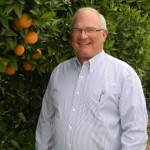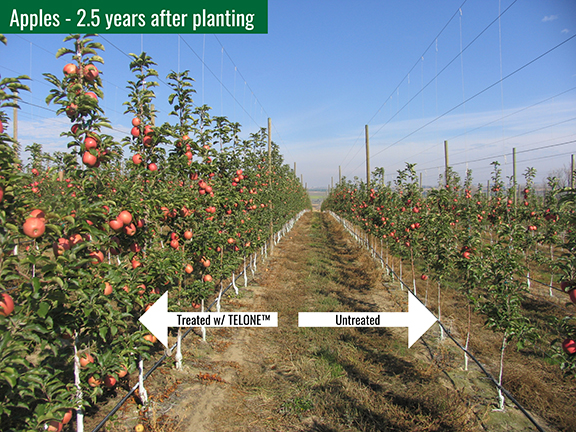The California Citrus Grower Defines Leadership
More than eight years ago, California citrus producers became aware of an unknown disease affecting Florida citrus quality and quantity. California growers traveled to Florida to learn more. They learned about tree symptoms, fruit shape, and fruit flavor. They learned about the same malady affecting Brazil. They saw a trend that could transcend into California. They decided to act.
At the conclusion of one of those trips and over a period of 12 months, hundreds of California growers traveled to Florida. A theme began to emerge and it was simple: We need to control our future and get ahead of the problem.
These growers knew a partnership with state and federal authorities would be ideal, but could they count on a financial partnership? Their answer was “no,” and they proceeded accordingly, knowing that an expensive undertaking was evolving.
But would it be too expensive?
A Costly Investment
The industry is a $3 to $4 billion industry, depending upon crop year. The Florida industry was experiencing 25% crop losses that would grow. Texas was surely next and stories were coming from Mexico. Brazil was pulling trees daily.
Could the California industry accomplish what other industries had yet to do: Find the Asian citrus psyllid (ACP) and Huanglongbing (HLB) before it found the commercial citrus industry?
Grower meetings were held, PowerPoints presented, newsletters written, and pictures forwarded. Traveling to Mexico elicited the conclusion that growers there were only worried about their groves, not what occurred in an urban setting. The percentage of loss increased in Florida and Brazil, ACP was discovered in Texas. A plan was molded by growers utilizing the industry’s trade association California Citrus Mutual.
Legislation was introduced in February, signed the following October, and implemented soon thereafter. Simultaneously, the scope of this incurable disease became greater. USDA mobilized and offered financial assistance.
The industry assessed itself to fund a program to find needles in a haystack. Fourteen growers were assigned the responsibility to create a program in conjunction with the state department of agriculture and USDA. The program had to include commercial citrus and that which existed in the back yards of California homeowners.
Partnering with Homeowners
No other production area sought to include homeowners as partners. It was these individuals that defined the name of the disease. We asked: Should we call it citrus greening as our colleagues around the country did? What about calling it yellow dragon disease as it was referred to in China, or Haunglongbing, the entomological name for the disease?
Focus groups were held and the unanimous conclusion from all was Huanglongbing because it sounded the most sinister and scary. Henceforth, in year two of the program, a consumer education program totaling almost a million dollars per year was created to strengthen a partnership between industry and homeowners.
The reports from Florida, Mexico, Texas, and Brazil became more ominous. The California industry spread thousands of ACP traps, created a massive education program, and commenced an effort to find the problem before it became a crisis. The program became a partnership between industry and the federal government with industry submitting $15 million per annum, which was augmented by Congress and USDA by another $9 million to $11 million per year.
Research dollars focused on projects to find beneficial insects, a cure, or an immune rootstock. The California and Florida industry joined forces to create a research-funding program specific to HLB. The cure was/is elusive. The growers assessed themselves more to underwrite operations throughout the state of California.
Finds Continue
Then, ACP was discovered in Southern California. A battle plan was forged and modified. Cultural costs increased depending upon the volume of ACP in a given area. Program meetings began to sound like a war room as battle lines were drawn, firewalls created, and action plans adopted.
News from Southern California became depressing as more and more ACP infestations were discovered. These critters multiplied at an exceedingly fast rate. Mild winters and the drought enhanced the population explosion. The research community sent a team to Pakistan to find a beneficial pest, achieved success but the beneficials cannot keep up with the ACP reproduction.
Meanwhile, China was now reporting a second infection and had lost 10% of its tonnage in the prime production area. Brazil had pulled 30 million trees, Texas reported HLB in commercial groves, Mexico has it in every state with a citrus tree, and Florida lost 70% of its tonnage. Today in California, citrus growers are modifying the battle plan, assessing themselves more dollars and, unfortunately, they have discovered HLB in urban settings.
In Los Angeles County, 29 backyard trees have been found. All were pulled with the cooperation of the homeowner in 24 hours. The volume of ACP and green waste being analyzed has increased tremendously. Boots on the ground are up dramatically. Messages are being sent via social media, conventional electronic airways, and print.
Today, growers from Florida, Texas, Arizona, Mexico, Australia, China, and South Africa are traveling to and monitoring our program. Today, the spotlight is on California growers and their leadership efforts to achieve what others have failed at so far. Finding the disease, removing it, and protecting the commercial citrus industry is the battle. Will we succeed? Only time will tell. But failure is not an option.










